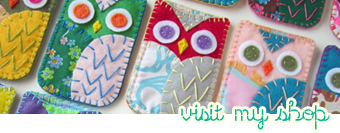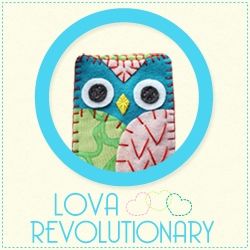See also : Can Etsy Save the Economy? @ re-nest/apartment therapy
Last summer I spent weeks shopping for an anniversary present for my wife. I searched all my usual retail sources but couldn't find anything that hit just the right note. Then I went to Etsy—an ecommerce site where artisans sell unique handmade goods—and found the microstore of ClockworkZero, a woman who turns old electronics gear into steampunk accessories. Presto: ClockworkZero's stuff was both gorgeous and geeky, precisely the vibe I craved. I came away with a necklace made from a vintage vacuum tube.
It turns out that I'm not alone in my search for that perfect one-off treasure. Judging from the explosive growth of Etsy and other online boutiques, the Web is spawning a curious new trend: micro-manufacturing. Consider the numbers. Etsy has 2 million users buying nearly $90 million worth of stuff annually. Its sales have increased twentyfold in the past two years. I was aware of the site but had dismissed it as some sort of urban-hipster thing—until I started seeing chatter about it on discussion boards for wealthy professionals and stay-at-home moms.
The economy may be cratering, but people are stampeding to handmade goods. Why? Part of it is a supply-side phenomenon: Thanks to the Web-fueled boom in DIY culture, there are more one-of-a-kind products being made. With sites like Instructables.com, Makezine.com, and Knithappens.com, it's now feasible to train yourself in a marketable craft using nothing but online guides. You can learn even derangedly complex knitting patterns or skills like circuit-soldering when you've got a YouTube video walking you through each step.
And if you're making awesome stuff in your spare time, pretty soon you'll start thinking: Hey, I could sell this, couldn't I? Not a bad way to recession-proof your household.
The other side of the equation is demand. The Etsy guys attribute their success in part to customers tiring of cookie-cutter products. "The '90s were the period of wearing big-box names on your chest," says Adam Brown, who heads up Etsy's cooperative advertising program. The site's popularity may also be a reaction to the slightly sour, rummage-sale feel that taints eBay, progenitor of the modern microbusiness.
But I believe our craving for one-off goods goes deeper yet. Digital culture has always been about customization and individuality: blogging your thoughts, designing monster houses in The Sims, Flickring your life, crafting unviewable MySpace backgrounds. It's all about creating a personalized aesthetic. After years of molding the digital world to suit our style, is it any wonder we want to do the same to the physical realm?
As Virginia Postrel wrote in her superb book The Substance of Style, Americans have become more discriminating over the past few decades. In the '60s and '70s, we worried about getting good-quality stuff, she says, because mass-market manufacturing was often of such poor quality. But most products these days are decent: the bargain-basement TV you get at Best Buy will last 15 years. So now we're focusing more on aesthetics, beauty, and uniqueness.
Indeed, as this market evolves, the physical world is going to be increasingly customized—built to your specs by craftspeople. Etsy now runs a service that lets you describe something you want—a pair of pants, a shoulder bag, a table—and how much you'll pay, then artisans can offer to make it for you. (Ponoko.com has a similar setup.) And as high-end atom-hacking tools like 3-D milling and laser cutting become cheaper, those folks on Etsy will be able to quickly deliver you customized versions of a huge array of personal products: Laptops, bicycles, even robots. The Age of Bespoke Everything, as it were.
Oh, and for the record: My wife loved the necklace.
Email clive@clivethompson.net.

































No comments:
Post a Comment